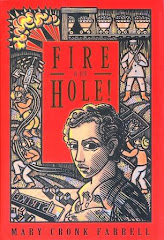
Days ago I set out to find a Christian Orthodox church with a living breathing community. I recently found this in a neighborhood along the Golden Horn called Fener, which refers to light. It is the home of the seat of Eastern Christian Orthodox Church and has been here in Istanbul since Byzantine times. The Patriarchate of the Greek Orthodox church has been in this particular neighborhood since about 1601. I read that the present church of St George was built in 1720. There are relics inside of at least three saints and the throne supposedly dates to Byzantine times. What stuck me about this sanctuary is its modesty. I happened upon it on a Sunday when a Mass was underway. The chanting or hymns sung before the priest entered the church sounded like opera mixed with the type of hum one might hear from Buddhist monks. Tourists flooded in and out, snapping pictures and taking video recordings.
Walking the streets in Fener that surrounded this church revealed a multifaith community. Women wearing head scarves and women dressed in black chadors—the covering more often seen in Iran—went about their errands. In this part of the city the homes maintain an old-style charm, colorful with bay windows and situated on steep cobble stone streets. Apparently, UNESCO is investing in restoring this area and another nearby neighborhood of Balak. To me, it had the atmosphere of an inner-city village of decades past. Quiet and few cars. There are other churches here as well. The one whose name caught my interest was St. Mary of the Mongols, if only because I’ve never heard the word saint associated with the word Mongol. St Mary’s story is a fascinating tale of a Christian who was sent to wed a Mongol khan in Persia. She converted many to Christianity and after the death and assassination of her two subsequent husbands, she went back to Istanbul and started a convent. As an aside, after reading Jack Weatherford’s book Genghis Khan, little would surprise me further about Mongols. Weatherford reported that Genghis held interfaith debates, they were like festivals and lasted days. He allowed freedom of religion across his vast empire.
Further up the Golden Horn I visited the neighborhood of Eyup and its mosque, which after Mecca and Jerusalem it is likely one of the most sacred places of pilgrimage in the Islamic world. The burial place of Eyup (Job) Ensari, the friend and standard-bearer of the Prophet Muhammad, may peace be upon them. I hadn’t known this about the mosque the afternoon I covered my hair with a scarf and entered, but it became evident that this holy site was of special significance. People flocked here on a Sunday, a day other than Friday. The courtyard had a celebratory air. People picnicked, fed pigeons and let their children run free. Inside the mosque itself, I sensed a cheerful feeling, more so than any other mosque I’ve visited. A large tree, perhaps hundreds of years old, bended toward the earth in the middle of the courtyard. Men and women lined up to touch the grill overlooking the site where I believe Eyup Ensari was buried. Blue and green tiles covered one wall of the inner courtyard. It is a mosque I wish to visit again. People seemed very welcoming of me and my American friend.
It is interesting that in Istanbul two of the most important sites belonging to both Christianity and the Muslim world have co-existed for centuries in neighborhoods that are nearly side by side.
One of my favorite moments in Istanbul was my second visit to the Kucuk Ayasofya mosque by the artist atelier that I mentioned in an earlier blog. I left my shoes at the door and walked inside to find an empty carpeted room. The quiet made my ears ring and it was then that I realized how much noise I had adapted to in the previous weeks. Several chandlers hung from the high domed ceiling, which was painted in delft blue hues on white. Sunshine streamed in through windows high up on the wall. It seemed much later before my hearing readjusted and I heard the random gleeful cry of a child outside and then the hum of traffic and the horrendous rush and roar of the tram that sprinted by. Its unnatural and frightening sound seemed a crime against this peaceful sanctuary.
My eyes fell on prayer beads that lay on a platform beside me, awaiting whoever may come to use them. Soon, two people walked in, a man and a woman without her hair covered. They sat on the platform besaide me and I soon heard the clicking of the glass beads as the man moved between his fingers in prayer.
Sometime later, a woman wearing a deep red scarf wandered in and sat on the platform that the man and woman vacated. Her soft murmurs, small utterances drifting my way. When she left, I found myself reciting the words, Hail Mary full of grace....
Hail Mary’s in a mosque. In a mosque that was once a church. St. Mary of the Mongols. The distinctions begin to blur. Blur so sweetly, peacefully.










No comments:
Post a Comment